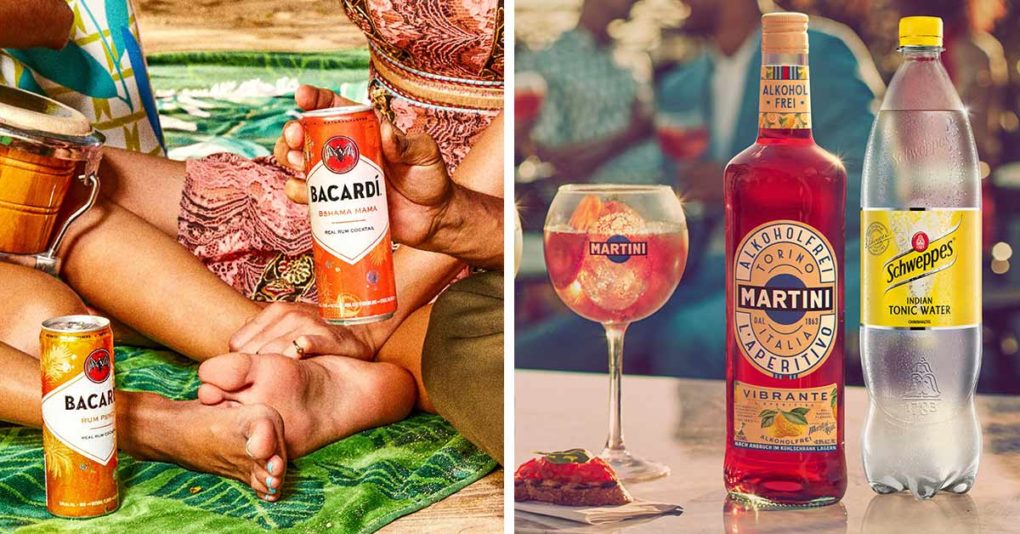Bars and restaurants are still traveling down the long road to recovery since the end of pandemic lockdowns, Bacardi is offering a potentially faster route.
On and off-trade beverage alcohol dollars have normalized in the past two years since the start of the pandemic: In April 2020, 93% of dollars went to off-prem, compared to March 2023 when dollars were more evenly split, with on-premise at 58% and off-premise at 41%, according to NIQ. On-premise sales have grown 10% year-over-year.
“When we look at our long term strategy as an organization, we have four key drivers, one of which is to continue to do well in the on-trade, to continue to support our partners, to continue to surpass consumer expectations,” said Rohith Reddy, vice president of on-premise for Bacardi Limited at the NIQ C360 conference last week.
With inflationary concerns and a pandemic-boosted e-commerce infrastructure, consumers are expected to continue treating themselves to drinking experiences at home. But on-premise is still key to promoting trial: 67% of U.S consumers are more likely to look for a new brand in stores that they have tried in bars and restaurants, according to NIQ. It’s also still the channel where brands are built, according to Reddy.
“It’s about trial, but it’s about experience,” he said. “And that will always be the hallmark of the on-trade, and I would maintain the hallmark of spirits brands and beverage alcohol. It’s not a transaction– it has to be an experience.”
Choosing the right channels to target for those experiences is important, as certain drinking establishments, such as nightclubs, haven’t recovered since the pandemic. Meanwhile, casual dining makes up the biggest channel in the on-prem market, according to NIQ.
“I think it would be silly to suggest that it’s going to be necessarily a rosy picture across all channels,” said Reddy. “But I think that’s where it becomes really important to be balanced, it’s potentially dangerous to look at the on-trade in aggregate.”
The executive added that he’s watching the high expectations forecasted for hotels and airlines. That channel is where Reddy sees room for RTD growth, adding that the format isn’t the right play for fine dining and stressing that companies should provide targeted experiences by channel.
The company’s commitment to on-trade echoes recent moves to premiumize its whiskey business, the lead on-premise drink category. The trend of drinking less-but-better in on-premise remains, as consumers are trading up their favorite spirits even in cocktails. In March, the company promoted Stephanie Macleod to the newly created role as director of blending for Scotch Whisky, in an effort to “continue the premiumization”of the Scotch whisky portfolio including brands such as Dewar’s Blended Scotch Whisky and William Lawson’s.
“With tequila seeing a 23% spike in popularity on-premise compared to last year, and whiskey crowned the lead of the on-premise drink category, ahead of cocktails, vodka, and even tequila, Bacardi brands are launching innovative, premium offerings to spike consumer interest and bring something new to the table,” said Sean Eckhardt, Bacardi senior vice president and managing director of North America sales.
The company has also recently launched a product targeting mindful drinkers, a non-alcoholic version of its Martini & Rossi aperitivos. About 46% of Gen Z can be classified as “substituters”, referring to individuals who enjoy no or low-alc drinks in place of full-strength drinks on certain occasions, according to the 2023 Bacardi Trends Report. As consumers increase drinking across categories even into no-alc, and as the cycle of innovation continues to blur category lines, Reddy believes it’s an exciting time to capture the needs of consumers who choose what to drink based on the occasion.
“What’s really interesting is looking at the variances even within occasions. So consumers may start that occasion with X, move on to Y and then ultimately finish with something else,” he said. “It’s imperative that we put ourselves in their shoes so we understand how we can continue to deliver.”
But building a meaningful on-premise experience comes down to long-term commitment, he added.
“I think you have to have a very sustainable approach and commitment,” he said. “And I think you have to be very clear in terms of what behavior you’re trying to drive, and what behavior you’re trying to affect your brand with.”
Bacardi ranked second in on-premise placements in 2022 according to marketing agency Overproof, following Diageo which is driven by brands like Don Julio, Bulleit and Ketel One. Those brands have made headlines for on-premise focused campaigns, such as Kettle One’s espresso martini machine designed to ease the strain on bartenders keeping up with the trending drink, and “Don Julio Cincos,” or $5 digital and paper vouchers for people to spend at a local bar or restaurant of their choice on Cinco de Mayo.
Bacardi’s most visible campaigns lately haven’t directly related to pushing drinkers on-premise, rather, they are clearly targeted at younger social media-friendly generations by offering streetwear collaborations, NFT and snapchat promos, and a summer concert series. But that may be a ploy to entice Gen Z consumers into the Bacardi fold who missed their first on-premise drinking experiences due to pandemic lockdowns, and are less likely to drink at nightclubs or concert venues.
